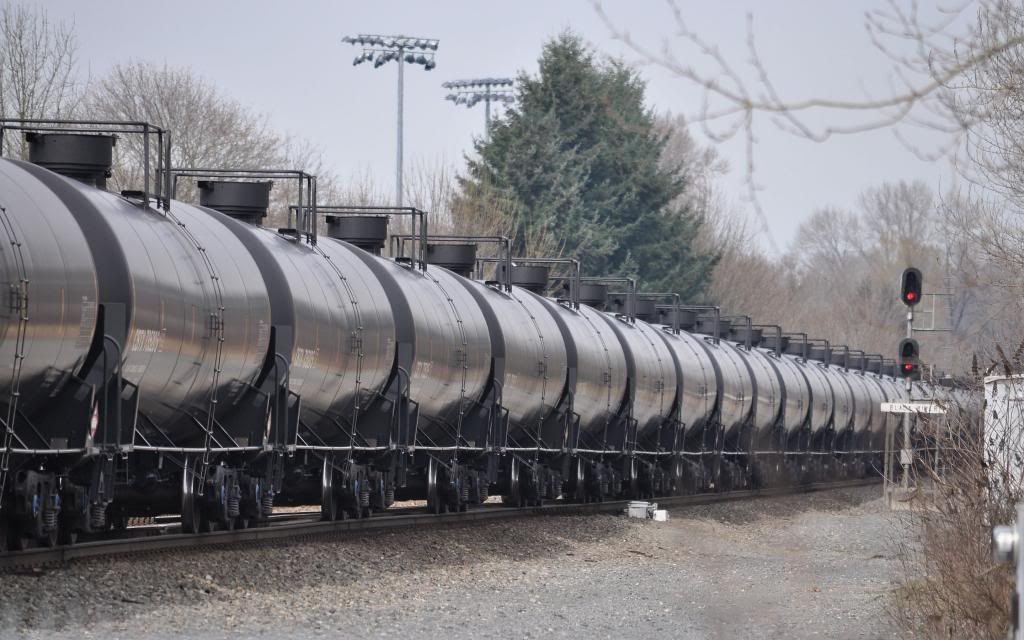John, I don't participate in the JR website or forums, so I am limited in what I can see about the 20,800 gallon car. According to some of the photos I've found on the web, one of the cars has a skin bearing the reporting marks, UTLX 68316. In real life a T106 car, which could be used to carry crude oil. If it were, it would not be compliant with US code of federal regulations, as it is not carrying the required placards for crude oil. Crude is a hazardous material, and vehicles transporting it must carry the appropriate placard, in this case, flammable class 3 placards with a UN code of 1267. The photos I have taken of cars intended for, or loaded with, crude oil have all been classed as
DOT111A100W1, with a capacity of about 30,000 gallons. Both the T106 and the T111 are general service, non-pressurized, non-insulated cars. Usually, a 20,000 gallon car is loaded with much denser commodities, such as molten sulfur, or caustic soda. On the other hand, if you find the JR car attractive, and want to use it, go ahead. As I recall the cars in the runaway train in Lac-Mégantic Quebec disaster were class T105, which differs from the T106 only in capacity: the T105 is the next class smaller. One orher thing to be aware of, which is more important than the size of the car, is the reporting marks: cars bearing markings (either logos, or reporting marks), identified with food manufacturers, such as ADM (ADMX, DMIX), Cargill (CRGX, PRGX), &c. would not be loaded with crude oil. Also, if the smaller lettering indicates some other commodity (like sulfuric or nitric acids, either of which would not be loaded with crude oil, don't use it in an oil train.
Having written all that, it is, after all your route, and if you use smaller cars, or cars with other logos / reporting marks, and your route has no virtual representatives of the FRA, or its Canadian equivalent in place, then few people will notice, and of those, only the obnoxious rivet counters will comment.
ns





